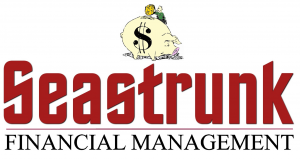Savvy Retirement Income Strategies
Taxes are different in retirement!
While you’re still working, much of what you owe in your taxes in any given year is preordained by your salary.
Sure, you might have room to lower your tax bill by making tax-deductible IRA and 401(k) contributions, for example, or deducting your mortgage interest. But the size of your paycheck is the biggest determinant of the taxes you owe on a year-to-year basis.
If you’re no longer earning a paycheck, the taxes you’ll owe will depend on your spending and where you draw your cash from: Social Security, your IRAs, a pension, and so on. Of course, you lose a bit of control over your tax bill once required minimum distributions from traditional retirement accounts commence at age 72. But it’s safe to say that retirees can exert more control over their tax bills than working people.
Once you reach retirement, it is important that you manage your retirement withdrawals from various accounts as tax-efficiently as possible. Taxes will likely be one of your biggest expenses in retirement.
The good news is that in retirement, there may be more options to increase after-tax income, especially when savings span multiple account types, such as traditional retirement accounts, Roth accounts, and taxable savings like brokerage or savings accounts. The not-so-good news is that choosing which accounts to draw from and when can be a complicated decision.
Timing is critical.
So, how and when you choose to withdraw from various accounts—401(k)s, Roth accounts, and other accounts—can impact your taxes in different ways. A tax-efficient withdrawal strategy can be the difference between the retirement you’ve dreamed of and just scraping by.
Taxes on Withdrawals – The Basics
There is nothing “basic” about retirement withdrawals. Here is a list of the key rules:
Traditional Accounts: All distributions from IRAs, 401(k)s, 403(b)s, and 457 accounts are subject to income taxes at ordinary income tax rates, except Roth accounts (assuming all requirements are met), and any funds contributed on an after-tax basis.
Roth Accounts: Withdrawals from Roth IRA and 401(k) accounts are tax-free if certain requirements, such as the five-year rule and reaching age 59 ½, are met.
Health Savings Accounts (HSAs): Withdrawals from HSAs are not taxed if used for qualified medical and related expenses.
Social Security: Social Security payments may be subject to income taxes if your overall income is over a certain threshold.
Pensions: Pension payments are usually taxable. In some cases, a pension from the state or a municipality will not be subject to state income taxes. If you are receiving a pension from this type of employer, check the rules for your state.
Appreciated Assets: Selling appreciated assets in a taxable account can result in long-term capital gains if held for longer than one year. These gains are taxed at preferential capital gains rates. Short-term gains are taxed as ordinary income.
Annuities: Annuities will be part taxable and part tax-free. If you annuitize, the portion of the payment attributed to the amount you contributed to the contract will be non-taxable. The rest will be considered as gains on your investment and will be taxed as ordinary income. Partial lump-sum withdrawals are taxed as gains until that “layer” is used up.
Here are some tips to make your retirement withdrawals as tax-efficient as possible.
- Review Your Situation Each Year It is important that you stay on top of your income and potential tax liability each year. Your investment returns may be significantly different this year than the year before, and other changes may impact your strategies. Tax planning should be done early in the year to allow you to decide on your best options for tapping retirement accounts and funding your retirement income needs. This is one of the reasons you might find it useful to maintain a comprehensive retirement plan. If you have all your data saved, it can be easier to update and assess different retirement withdrawal strategies.
- Take Required Minimum Distributions, but Manage Carefully. Required minimum distributions (RMDs) start at age 72 and are a requirement, as the name implies. Holders of IRAs, 401(k)s, and other retirement accounts funded with pre-tax contributions are required to take a distribution based on an IRS table and the amount in the account(s) as of December 31 of the prior year. This distribution (another word for withdrawal) is fully taxable on top of any other income you may have.
- Watch Your Total Income for the Year: The RMD might push your income to a level where your Social Security becomes taxable or could even push up the amount you pay for Medicare. If possible, reduce income from sources other than the RMD if this will be a factor.
- Donate to Charity: IRA Qualified Charitable Distributions allow those who are 70 ½ to direct some or all of their RMD to a qualified charity. This amount will be excluded from their income, though they cannot take a charitable deduction. This is only available for IRA accounts. This is a tax-efficient way to meet those goals if you don’t need all the money and have charitable inclinations. These RMD contributions are capped at $100,000 annually.
- Consider Health Savings Accounts (HSA) Ideally, this is a strategy you will implement prior to retirement. Funding an HSA account is a great way to combat the rising cost of health care in retirement and to do so with tax-free withdrawals. The HSA allows you to contribute money on a pre-tax basis. Leave this money invested while you are working and pay current out-of-pocket medical expenses from other sources. You can then use this money to cover qualified healthcare expenses in retirement with tax-free withdrawals.
- Evaluate Roth Accounts: Roth IRA accounts and Roth 401(k) accounts allow for tax-free withdrawals in retirement. There are no RMDs on Roth IRA accounts to boot. The trade-off is that Roth contributions are made with after-tax dollars, so you need to decide if current savings or tax savings in retirement are more valuable to you.
- Managing distributions from your various taxable, tax-deferred, and tax-free accounts during retirement is critical. Developing a tax-efficient withdrawal strategy is a balancing act that needs to be reviewed and revised (if needed) annually. The effort is worth it, and the payoff can be more money for you to enjoy in retirement.
Our first meeting is usually a meet’n’greet session so we can hear about your situation and you can find out more about our services and prices. It is free and takes about an hour.

